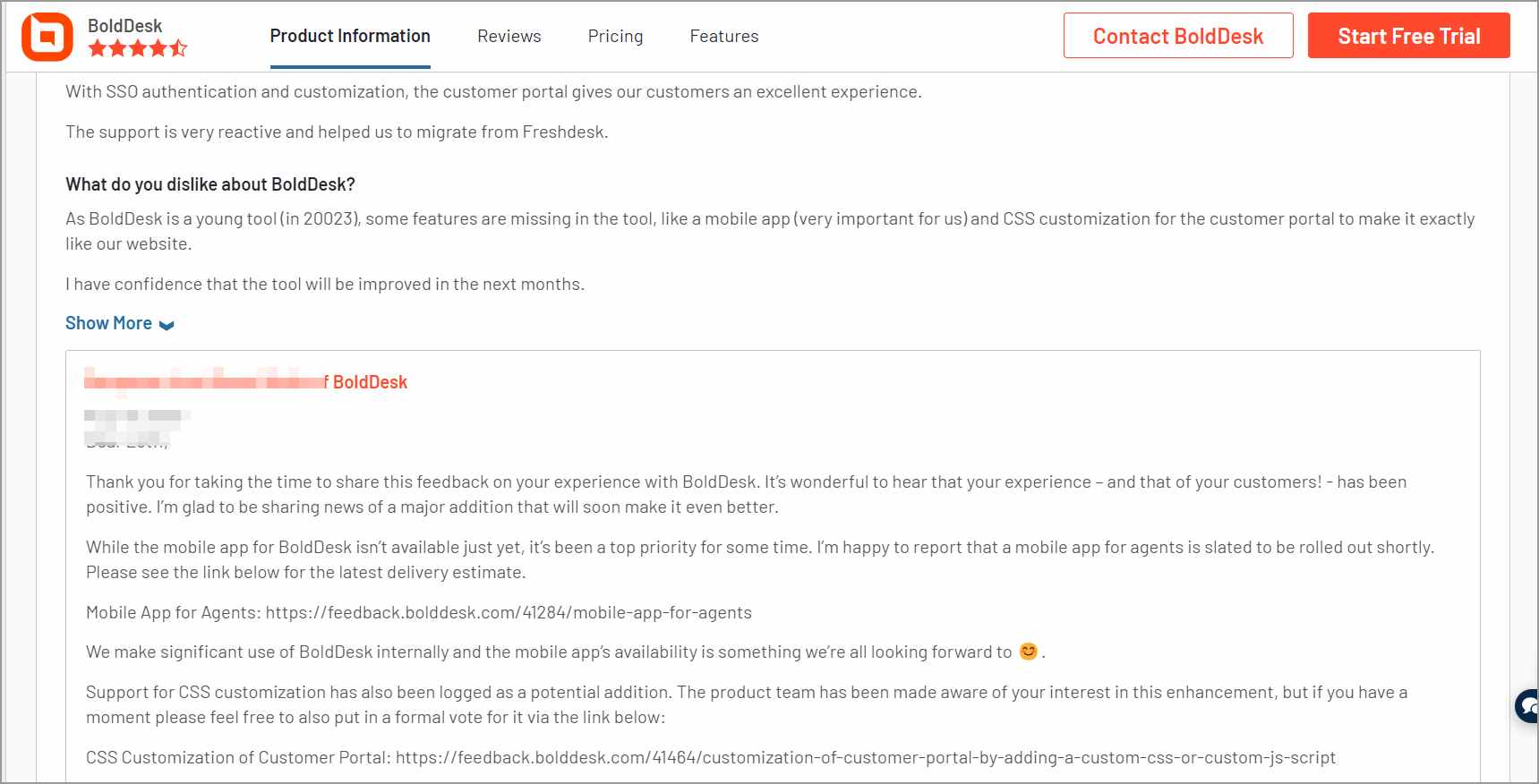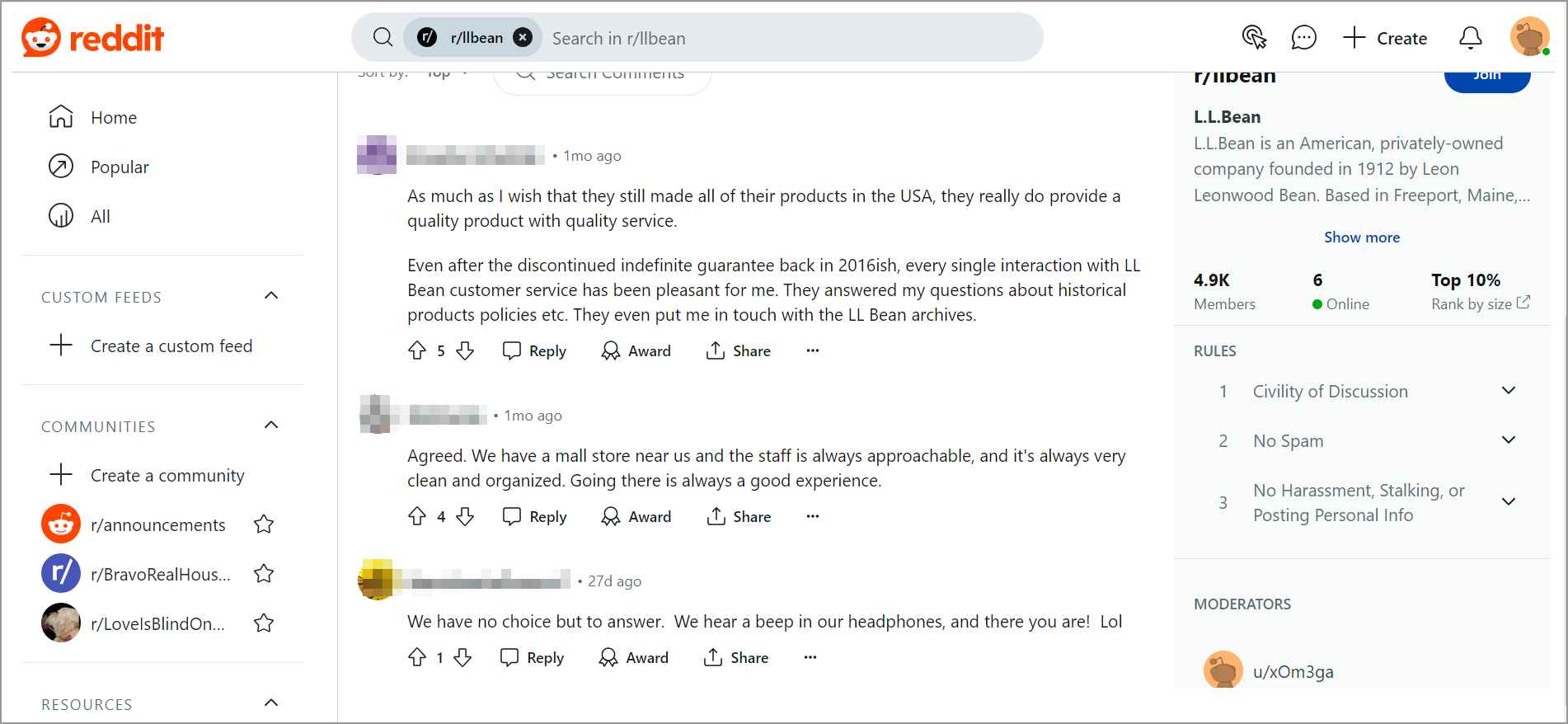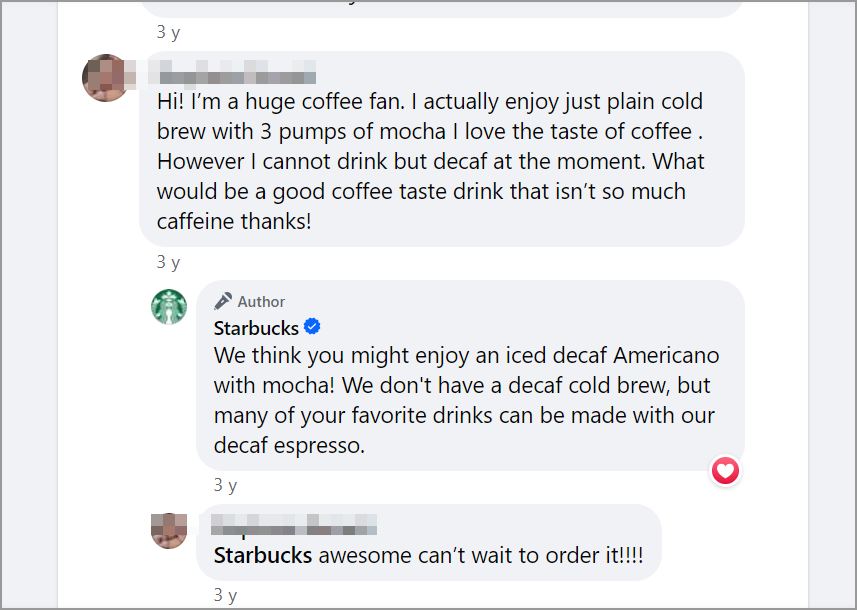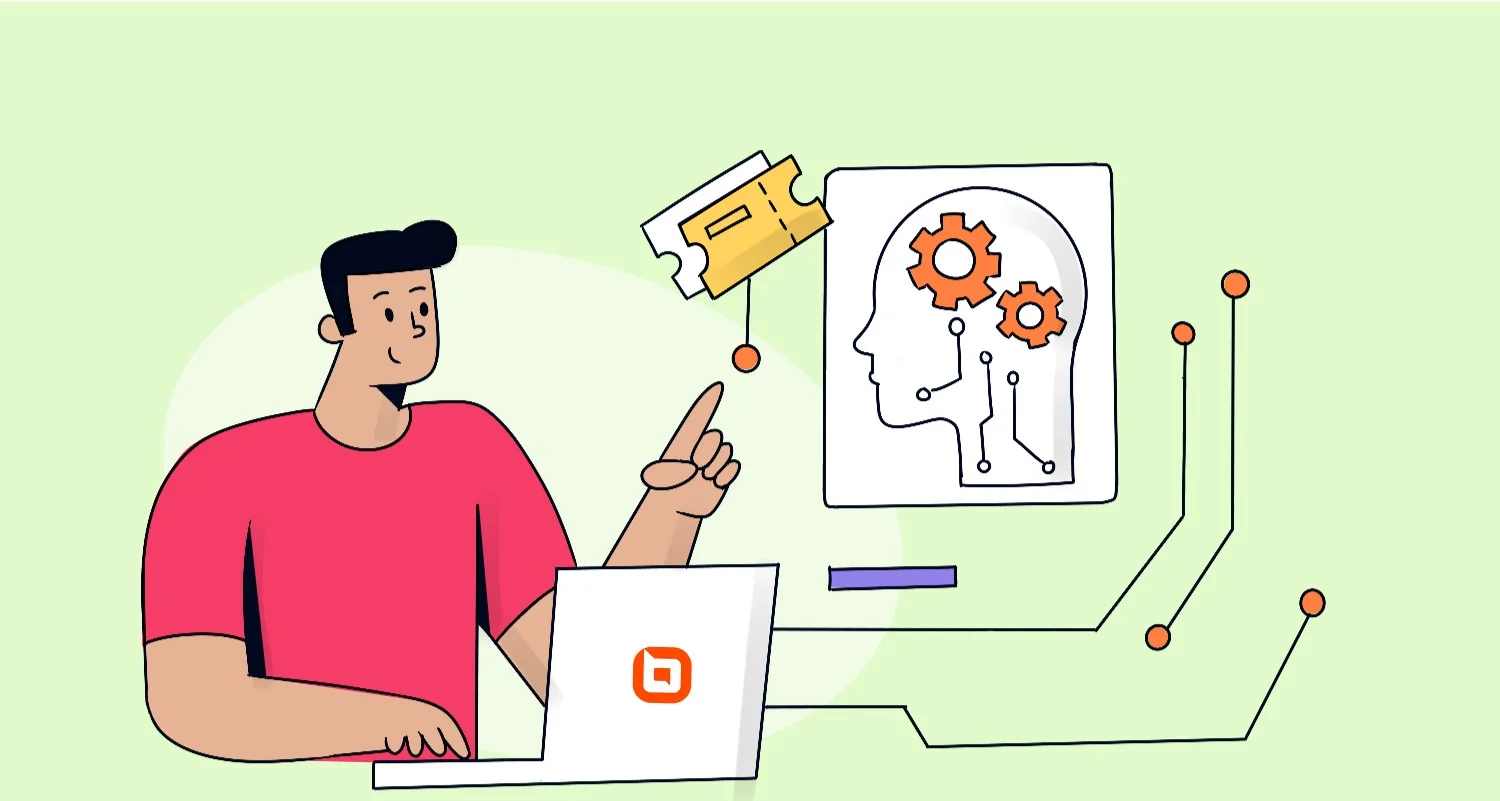Without customer care in business, both customers and employees would experience heightened frustration.
Customers would struggle to get help, and employees would face escalated issues without proper support channels, which in turn affects the survival and success of the company.
Jannik used to greet each customer in his online bookstore with a virtual smile. He carefully assisted a man who was looking for the most recent book by his favorite author.
Grateful for the help, the man returned with companions. Word quickly spread, and Jannik’s considerate attention transformed the small online store into a famous online bookstore.
By bringing personalized care to the digital realm, Jannik’s bookstore became more than just a place to buy books—it became a beloved online bookstore where customers felt valued and supported.
This is a powerful illustration of the value of providing true customer care, which can transform your business. Let us learn what customer care is, its importance, examples, and more.
What is customer care?
Customer care is how companies treat their customers with kindness, humility, and respect to build an emotional bond, trust, and loyalty.
It involves more than just providing required services or technical assistance. Rather, it prioritizes addressing the emotional needs of clients and building strong bonds with them.
You can determine satisfaction levels, pinpoint areas in need of development, and monitor performance over time by measuring customer care with metrics such as:
- Net promoter score (NPS)
- Customer effort score (CES)
- Customer satisfaction score (CSAT)
Customer care vs. customer service vs. customer experience
The three concepts are different but closely related. Each has a unique role in the customer-business relationship. This is how they differ:
Customer care vs. customer service
Customer care and customer service are related concepts frequently used interchangeably.
They refer to distinct elements of the customer-business relationship:
| Customer care | Customer service |
|
|
|
|
|
|
Customer care vs. customer experience
A customer-centric strategy must include both customer service and customer experience.
They complement one another to produce meaningful and satisfying interactions that promote customer satisfaction, loyalty, and advocacy.
| Customer care | Customer experience |
|
|
|
|
|
|
9 Efficient customer care best practices
Companies can improve customer retention, cultivate lasting relationships with clients, and set themselves apart in a highly competitive marketplace by adopting these customer care best practices:
![Customer Care: Why It's Essential for Business Success [+ Examples]](https://storage.googleapis.com/cdn-website-bolddesk/2024/06/d5ca4b49-customer-care-best-practices-compressed.jpg)
Making yourself easily accessible to your clients
Businesses show their commitment to providing excellent customer care by making it easy for customers to reach them.
Some of the ways to ensure you are always within reach are:
- Including your phone number, email address, physical address (if relevant), and URLs for messaging or live chat platforms on your website.
- Make sure your website is optimized for smartphones and tablets, ensuring a seamless user experience on any device.
- Integrate live chat support into your website, allowing customers to initiate real-time conversations with support agents directly from any page.
- Use push notifications to keep them informed about their inquiries, updates, and promotions, enhancing customer communication efficiency.
Actively listen to your customers’ concerns
Listening involves giving the customer your complete attention, whether over the phone, by email, or in person, without any interruptions.
Put yourself in the customer’s shoes and try to understand their point of view and show empathy for their situation.
Even if you might disagree with them or are unable to help them right away, acknowledging their emotions and frustrations can develop trust reducing tension by acknowledging their feelings.
Focus on first impression
This component sets the tone for the whole business-customer interaction.
You can show that you care for your customers by:
- Always extending a nice greeting to clients, whether they are in person or online, to help them feel important right away.
- Make sure the professionalism of your brand is consistently reflected in all client touchpoints, including your website and communication platforms.
- Establishing credibility and trust right away, making sure that all your conversations are clear, courteous, and free from errors.
Manage your customer expectations
When customers have clear, realistic needs, they are more likely to be satisfied with the service they receive, even if issues arise.
Here are key strategies to achieve this:
- Specify response times, resolution times, and the level of support customers can expect.
- Offer clear solutions or alternatives that can be realistically delivered and communicate these openly with customers.
- Regularly update them on the status of their orders, service requests, or any changes that may affect them. This helps manage customer expectations and reduces anxiety.
This proactive approach to customer care ensures that they feel informed, valued, and confident in their customer interaction with your brand.
Be transparent in your communication
Transparency involves ensuring that all the information you give customers about your goods, services, rules, and procedures is accurate and simple to understand.
You need to:
- Notify customers of any improvements or changes you make to your products, along with the reasons behind them as you provide assistance and direction to customers during the transition period.
- Show accountability by owning up to your mistakes, making corrections, and providing the affected clients with suitable compensation or refunds.
- Transparency in customer care leads to increased customer satisfaction and enhanced brand loyalty creating a stronger relationship between a brand and a consumer.
Train your employees
Employees must receive regular training to understand the unique demands and preferences of their customers.
You can:
- Train your employees to actively listen and to have the patience to connect with consumers, truly understand their problems, and provide appropriate answers.
- Providing staff with thorough knowledge of your goods or services is equally important as it gives them the assurance to respond to customers’ questions, provide accurate information, and offer helpful advice or troubleshooting assistance.
Furthermore, training teaches the importance of working independently, offers clear decision-making guidance, and instills a sense of responsibility for ensuring customer satisfaction.

Personalize your interactions with your customers
This approach not only builds rapport but also strengthens the relationship between your business and the client. You can show that you are aware of their needs by:
- Addressing them by their names.
- Thinking back to previous interactions.
- Acknowledging their personal preferences.
Personalized messaging, customized offers, or relevant guidance tend to attract positive responses from customers, increasing brand advocacy and loyalty.
Companies that put personalized customer service first in their interactions stand out from competitors who provide generic or uniform experiences, strengthening customer relation and increasing brand loyalty.
Respond to your customers promptly
A prompt response establishes a good tone for the entire exchange by demonstrating professionalism, attentiveness, and a commitment to customer satisfaction.
To achieve this, businesses can utilize various help desk software that enable fast and efficient responses.
Some key features:
- Automated responses
- Omnichannel inbox
- Automated ticketing systems
- Artificial intelligence (AI)
- Live chat
By investing in these features and strategies, businesses can provide prompt and effective responses to customer inquiries.
This not only enhances satisfaction but also cultivates customer trust and loyalty, laying a strong foundation for long-term success and growth.
Appreciate and recognize your customers
Customers are more likely to recommend a business to others and make repeat purchases when they feel valued.
Effective methods to appreciate customers for their support include sending them customized thank-you notes or implementing a loyalty program that rewards repeat customers with points, discounts, or exclusive offers.
Research by Personify states that, according to 91% of respondents, they are more inclined to do business with organizations that appreciate their clients.
By giving consumers a sense that they are respected and appreciated, businesses can provide memorable experiences that result in long-term success.
Why is customer care important?
Customer care is praised as the cornerstone of prosperous business operations that satisfy and even go beyond the requirements and expectations of their customers.

Here are some of the benefits of customer care:
Builds brand loyalty
Good customer care creates an emotional bond between the brand and its customers.
This connection makes customers feel valued and appreciated, fostering loyalty and a sense of belonging. Loyal customers voluntarily become brand advocates.
These can be instrumental in building a strong, positive reputation and can influence potential customers through testimonials and reviews.
Leads to revenue growth
Effective customer care involves understanding customer needs and preferences. This knowledge allows businesses to customize their offerings and suggest relevant products or services, increasing revenue.
According to Forbes, 60–70% of sales are made from existing clients; only 5–20% are made from new customers.
When customers trust a company, they are more open to additional purchases. Trust built through high-quality customer care can facilitate upselling and cross-selling.
Reduces churn rates
Effective customer care helps build strong relationships with customers based on trust, satisfaction, and loyalty. Bad customer service can result in loss of business or customers who opt for other businesses.
With this in mind, businesses can lower churn rates and increase customer retention over time by putting a high priority on customer care and responding to issues quickly and efficiently.
Strengthen customer trust and relationships
When customers encounter problems, they seek assistance or resolution promptly.
Customer care teams are equipped to respond to these issues by troubleshooting technical problems, handling billing discrepancies, or resolving service complaints, ensuring that customers don’t feel ignored or neglected.
By effectively addressing customer concerns and resolving problems, businesses can build stronger relationships with their customers and differentiate themselves in the competitive marketplace.
Identifying areas for improvement
Communication with customers, whether through support calls, emails, or social media channels, provides a direct avenue for customers to voice their opinions, concerns, and suggestions regarding products or services.
Through these interactions, businesses can identify recurring issues or pain points that customers experience.
These could range from product defects to service delivery problems or even areas where the customer experience can be improved, leading to the development of better products and services that meet customer needs and preferences more effectively.
Customer care examples
These examples show how businesses in a variety of areas show their dedication to providing excellent customer care by taking proactive steps and offering customized experiences that put the needs of the customer first.
BoldDesk
BoldDesk is known for its excellent customer care and software for customer assistance. Recently, a BoldDesk customer left a comment on G2 requesting that BoldDesk add a mobile app and CSS customization for websites.
With a thorough and thoughtful response from the customer care agent, the customer received a clear response that shared news of major additions to BoldDesk’s services.
The response mentioned that support for CSS customization has been logged as a potential addition, indicating that BoldDesk is not only addressing current issues but also planning future enhancements based on customer feedback.
The response showed BoldDesk’s commitment to customer satisfaction and trust-building by offering a personal, transparent, proactive, and future-focused response.

L.L.Bean
L.L. Bean, a renowned outdoor apparel and gear shop, is praised for its high-quality products and outstanding customer care.
One customer left a review on Reddit about their experience with the business and complemented them on continuing to provide excellent service.
They related their experiences interacting with L.L. Bean customer care, pointing out that all their dealings with the company were excellent, even after the firm ended its indefinite guarantee in 2016.
The customer valued the way the customer care staff responded to their inquiries regarding previous product policies and even put him in touch with the L.L. Bean archives.
This account shows L.L. Bean’s continuous commitment to offering outstanding customer care by meeting their customers’ requirements, whether it is by providing thorough answers to product inquiries or timely service.

Starbucks
Starbucks is known for its exceptional coffee as well as a variety of drinks made with espresso, teas, pastries, and snacks.
One customer asked Starbucks on Facebook about a good coffee beverage. They mentioned that they enjoyed cold brew with mocha but that they had to have a decaf alternative because of dietary constraints.
Starbucks gave them a personalized recommendation for an iced decaf Americano with mocha right away, based on their preferences and decaf needs.
The prompt and courteous exchange demonstrated Starbucks’ dedication to efficiently handling consumer questions.
The customer was pleased and responded with enthusiasm, saying they were eager to try the suggested drink.
Starbucks demonstrated its commitment to providing exceptional customer service by offering this customer a customized and useful solution that made them feel acknowledged and appreciated.

Enhance customer care for your business
Remember that achieving excellent customer care is an ongoing process. It calls for constant dedication, flexibility, and readiness to listen and address the changing demands of your clients.
Stronger brand reputation and stronger customer relations are the results of every effort you make to improve customer care.
Are you ready to take your customer care to new heights? BoldDesk will empower you to boost your customer care, create enduring connections, and promoting your company’s growth.
Schedule a live demo to get started on the path to providing outstanding customer care or get a free trial and see the difference firsthand. Feel free to contact us if you need any additional support.
Hope you found this blog post helpful. We value your feedback: Feel free to add any ideas or suggestions by leaving your comments in the provided space below.
Related articles


















 Email Ticketing System
Email Ticketing System Shared Inbox Software
Shared Inbox Software Multi Brand Help Desk
Multi Brand Help Desk Internal Help Desk Software
Internal Help Desk Software Trouble Ticketing Software
Trouble Ticketing Software Mobile Help Desk
Mobile Help Desk 










![Customer Care: Why it Matters [+ Examples]](https://storage.googleapis.com/cdn-website-bolddesk/2024/06/9563c4b7-customer-care@2x-banner-compressed.jpg)







